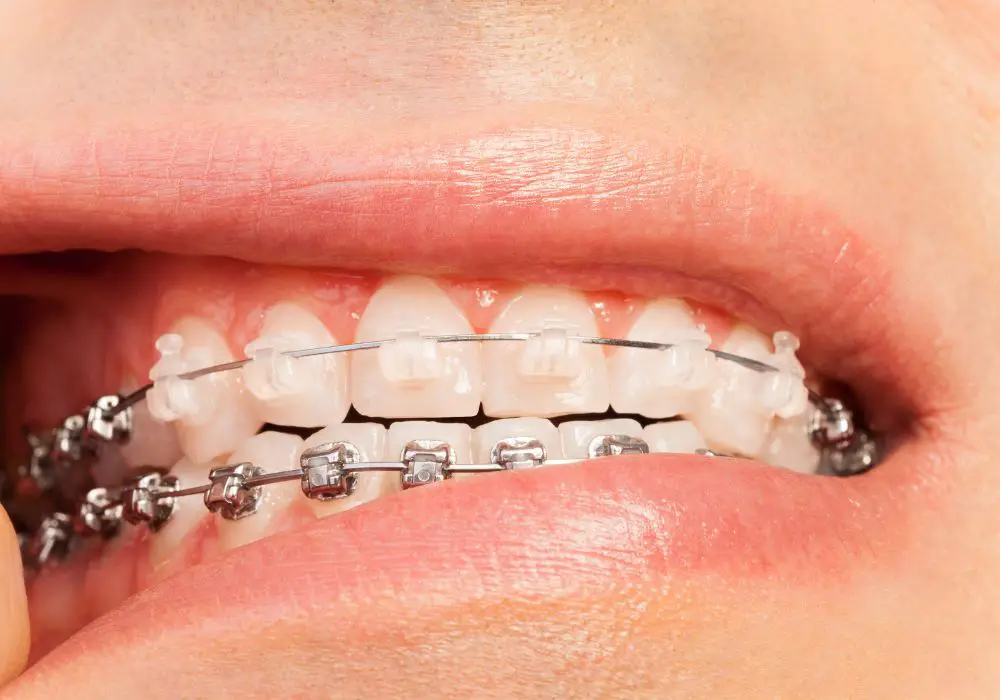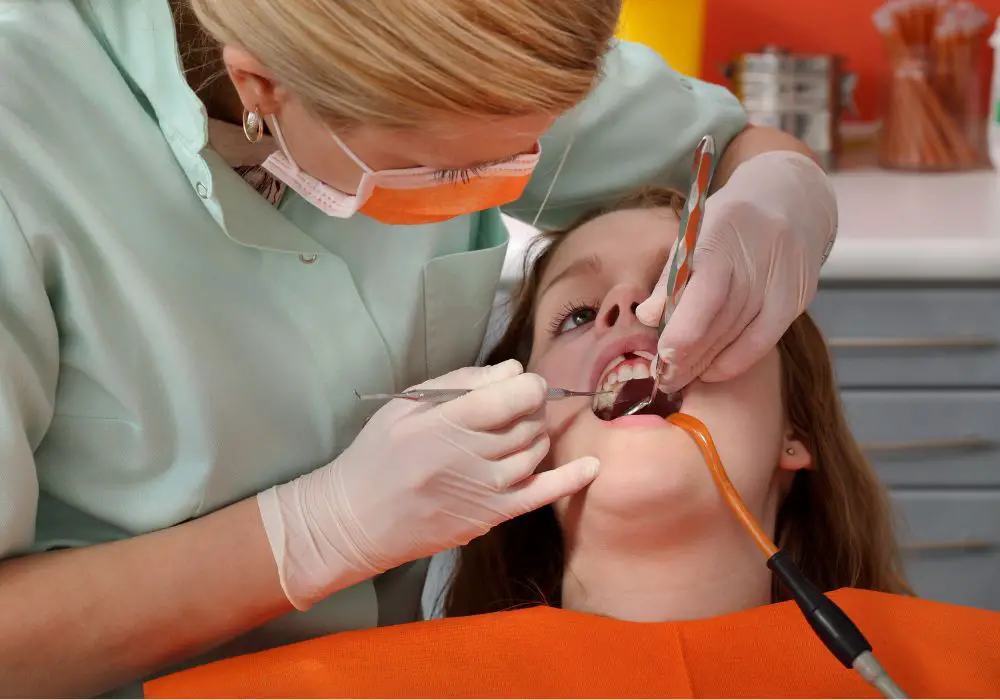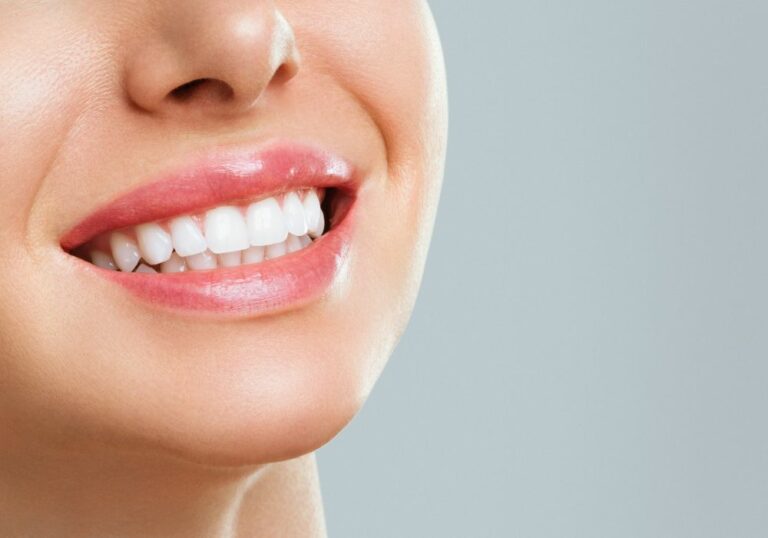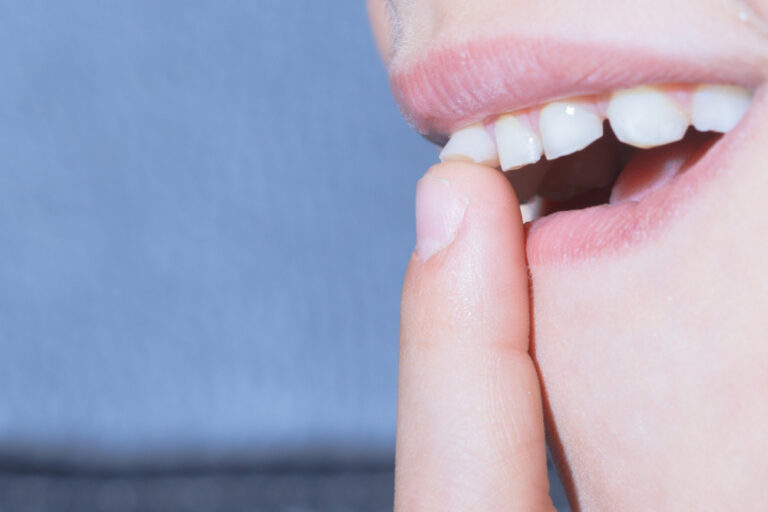Orthodontic treatment aims to properly align teeth and correct malocclusions, or bad bites. This often requires reshaping or recontouring teeth so they fit together correctly. Filing or grinding teeth is one method orthodontists may utilize to “make space” or improve the fit between teeth. However, orthodontic filing is not the same as dental reshaping done for purely cosmetic reasons. Understanding when and why orthodontists file teeth can help you make informed decisions about treatment options.
When Do Orthodontists File Teeth?

There are several specific reasons an orthodontist may decide to file down teeth:
Correcting Crowded Teeth
Teeth crowding occurs when there is insufficient space in the dental arches for all teeth to align properly. The front teeth may overlap or twist out of place, while crooked overlapping may cause problems with the bite. By reshaping the edges of the teeth, orthodontists can “uncover” valuable space within the arch needed to correctly line up the teeth. This is done gradually over time using braces or clear aligner trays. Moderate enameloplasty or odontoplasty of 2-4 teeth can prevent the need for extractions in cases of mild to moderate crowding.
Relieving Problematic Occlusion
The way upper and lower teeth contact each other as the jaws close and chew is referred to as occlusion. Certain anatomical features can cause problematic occlusion that leads to uneven contacts, dental wear, jaw pain, or bite issues. Pointed cusps, overlapped edges, ridges, and uneven tooth margins may all contribute to occlusion problems. Selectively grinding down areas where abnormal cusp/fossa contacts are occurring can help smooth out the bite. This is done conservatively to remove interference points and establish normal occlusal relationships.
Fitting Orthodontic Appliances
In some situations, minor filing of teeth enables proper fitting of fixed orthodontic appliances. This may be necessary if teeth have small chips, cracks, or uneven shape. Reducing surface irregularities provides a cleaner bonding surface for attaching metal brackets or clear aligner trays to teeth. Carefully smoothing out the teeth facilitates better contact between the attachment and enamel. This provides more secure and accurate orthodontic tooth movement.
Smoothing Developmental Defects
Enamel imperfections like pits, grooves, or hypocalcifications can sometimes complicate orthodontic treatment. Banding or bonding orthodontic brackets over uneven areas often results in poor fit and increased adhesive failure risk. Selectively filing out defects and smoothing rough spots allows orthodontic components to be placed flush against solid, healthy enamel. This improves bracket retention throughout the course of treatment.
Orthodontic Filing Process
Orthodontic tooth reshaping must be approached with care and precision. Enamel is carefully contoured using specialized dental techniques:
- Diamond burrs or abrasive discs are used with light pressure and constant water irrigation to slowly reshape enamel. Orthodontists have an exceptionally delicate touch to remove only thin amounts of enamel accurately.
- Cheek retractors are placed and cotton rolls are used to protect the gums and soft tissues from the grinding process. Local anesthetic may be applied as well for additional comfort.
- A high-speed dental handpiece or specialized belt-driven lathe produces smooth rotational grinding motions against the targeted areas of the teeth. Coolant water sprays help prevent heat damage to tooth structures.
- Fluoride foam or fluoride varnish is periodically applied during the contouring process to strengthen enamel and offset mineral loss from reshaping.
- Dental models, intraoral photos, and radiographs are referenced to regularly check progress in achieving the desired tooth anatomy.
- Smoothing burs and polishing points are used to refine the shape for a natural appearance and feel. This helps prevent plaque retention on newly contoured surfaces.
Only 0.2mm to 0.5mm of enamel thickness is removed on average. This ultra-conservative approach maintains adequate enamel thickness to protect teeth. If done properly, the process causes no trauma to the tooth pulp or soft tissues.
Risks of Orthodontic Tooth Filing

While relatively minimal, there are some risks associated with filing teeth for orthodontic treatment:
- Tooth Sensitivity – Removing outer enamel exposes the softer, porous dentin underneath. This can lead to heightened sensitivity to hot and cold temperatures. Sensitivity is common during the first few weeks after reshaping but normally decreases over time as teeth re-mineralize.
- Dental Decay – Loss of protective enamel increases vulnerability to cavities and decay, especially around orthodontic bands. Maintaining excellent oral hygiene and using prescription fluoride is essential. More frequent dental cleanings may be needed as well during and after treatment.
- Aesthetic Changes – Recontouring inevitably alters natural tooth anatomy and appearance. However, dental symmetry and proportions can be maintained with careful shaping. Minor changes may be detectable upon close visual inspection.
- Nerve Exposure – Aggressive filing extending into the dentin risks exposing the tooth pulp. This causes severe pain and requires immediate root canal treatment. But pulp exposure is extremely unlikely with the safest filing techniques.
- Weakening Teeth – Excessive enamel removal jeopardizes tooth integrity and strength over the long-term. As long as reduction is kept under 0.5mm, strength remains largely unaffected.
While low, risks are still present and should be discussed with the orthodontist. More significant tooth reshaping increases chances of tooth damage or sensitivity. Conservative, precision filing helps avoid complications.
Alternatives to Orthodontic Filing
Depending on the patient’s unique malocclusion, alternatives to tooth filing may be appropriate:
- Tooth Extraction – Removing premolar teeth creates more space in a crowded dental arch. This permanent change is irreversible but may avoid filing.
- Palatal Expanders – Orthodontic appliances can mechanically widen the upper jaw, providing more room for teeth alignment. This is an option for teens and pre-teens still experiencing growth.
- Ceramic Braces – Clear ceramic braces blend in more than metal braces. Although some enamel reduction may still be required, aesthetics are less affected.
- Clear Aligner Therapy – Brands like Invisalign?? use smooth, thin plastic trays to incrementally shift teeth. Aligners need little to no filing compared to fixed braces.
- Do Nothing – If enamel reshaping is primarily for cosmetic improvements, declining treatment remains an option. But any functional occlusion or spacing issues should be considered.
The orthodontist will advise which alternatives may suit the malocclusion and treatment goals. Weighing all options helps determine if filing is appropriate or if another approach is preferable.
Orthodontic Filing Insurance Coverage
When medically warranted, orthodontic filing is typically covered along with comprehensive braces or clear aligners. But policies vary on exactly what procedures are covered:
- Filing done to facilitate orthodontics is generally bundled into the total treatment cost. This is then covered per the policy limits, often up to $1,000 to $3,500 annually.
- Purely elective cosmetic filing may be excluded or denied, unless deemed medically necessary. Orthodontists may need to submit evidence of medical need.
- Most policies cover teens under age 19, but some extend orthodontic benefits up to age 26. Adults typically have little or no coverage.
- Confirm your particular orthodontist is within the insurance provider’s network to receive coverage. Out-of-network costs may not apply to limits.
- Check if referrals or pre-approvals are required prior to any tooth reshaping. Doing this prevents avoidance of claims due to administrative reasons.
Understanding orthodontic benefits and limitations provides more accurate information on expected out-of-pocket costs for tooth filing procedures.
Costs of Orthodontic Tooth Filing
Like all dental treatments, a number of factors determine the overall price of orthodontic tooth filing:
- Amount of Enamel Reduction – More extensive reshaping and greater number of teeth filed costs more in professional fees. Minor rounding of tooth edges takes less time than reducing ridges or recontouring full surfaces.
- Type of Orthodontic Treatment – When done to enable braces or aligners, filing fees are incorporated into the total treatment cost. For purely elective cosmetic filing, charges apply specifically to the tooth reshaping itself.
- Provider Fees – Orthodontist costs vary significantly based on location, qualifications, years in practice, and office overhead. Metropolitan practices tend to be higher.
- Insurance Details – Out-of-pocket expenses depend on the deductible, copays, coinsurance percentage, and annual maximums dictated by the policy.
On average, filing by an orthodontic specialist typically costs:
- Minor reshaping (1-2 teeth): $50 – $150
- Mild reshaping (3-6 teeth): $200 – $500
- Major reshaping (6+ teeth): $600 – $1,200+
Purely elective cosmetic recontouring without functional orthodontic need may cost over $200 per tooth. Obtaining fee estimates and insurance details provides the most accurate price quote.
Results of Orthodontic Tooth Filing

When performed correctly, orthodontic tooth filing offers excellent cosmetic and functional outcomes:
- Teeth become better aligned with ideal overjet and overbite. Gaps close and crowding resolves.
- Occlusion normalizes, allowing even tooth contacts and proper bite force distribution.
- Less extraction of permanent teeth is needed for crowded cases.
- Orthodontic appliances bond and function optimally during treatment.
- Tooth contours end up smooth and natural-looking. Reshaping is impossible to detect after braces.
- Any post-procedure sensitivity is transient and dissipates within a few weeks.
However, inappropriate filing techniques could lead to unappealing tooth form, prolonged pain or sensitivity, or dental problems. Careful planning and precision grinding greatly reduce these risks.
FAQs About Orthodontic Tooth Filing
Below are answers to some common patient questions about orthodontic enamel reduction:
Does tooth filing hurt?
Since enamel has no nerve endings, patients should feel no pain during the reshaping process. Use of a local anesthetic ensures maximum comfort. There may be temperature sensitivity afterward, however, while the underlying dentin layer recalcifies and seals.
How long does the filing process take per tooth?
On average, an orthodontist can carefully file each individual tooth by hand in 10-15 minutes. The total time needed depends on the number of teeth involved. Minor reshaping of just 2-4 teeth may take one 30-60 minute appointment. More complex cases could involve multiple 2+ hour sessions.
Can teeth become permanently damaged from filing?
There are always risks when removing natural tooth structure. However, under 0.5mm of reduction by a skilled orthodontist is considered very safe long-term. Smoothly contoured margins prevent chipping or fracturing as well. Ongoing dental exams help detect any issues that arise.
Will my teeth appear smaller after enamel reduction?
Only a barely detectable decrease in tooth size should occur from conservative reshaping. An experienced orthodontist maintains proper anatomical dimensions and symmetry. Excessive shortening of teeth only results from more radical filing beyond what is needed orthodontically.
Is it possible to remove too much enamel from teeth?
Yes, overly aggressive filing permanently compromises teeth. Removing more than 0.5mm of enamel leads to decay risks, damage, and severe sensitivity. Allowing only trained orthodontists to perform careful, minimal filing helps avoid these problems.
Can teeth grow back enamel after it is filed off?
No, enamel loss from filing is irreversible. The remaining enamel may re-mineralize somewhat over time and become stronger. With an ultraconservative approach, long-term prognosis remains excellent. Practicing outstanding oral hygiene also helps maintain filed teeth.
Conclusion
Orthodontic tooth filing or odontoplasty offers advantages for correcting some bite issues and fitting appliances. Precise, controlled enamel reduction by an experienced orthodontic specialist has minimal risks. However, alternatives may allow similar orthodontic treatment results without permanent removal of enamel. The orthodontist can advise whether conservative filing, extractions, expansion, clear aligners, or a combination are most appropriate. With open provider-patient communication, the best treatment plan can be tailored to the individual malocclusion.







